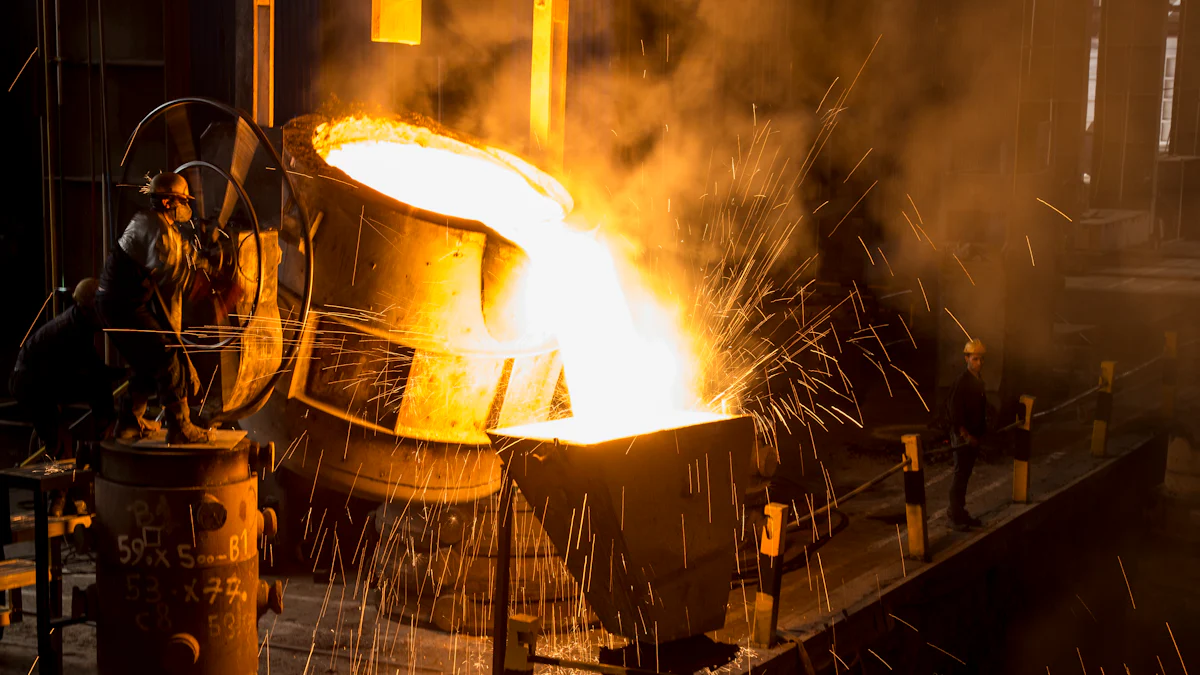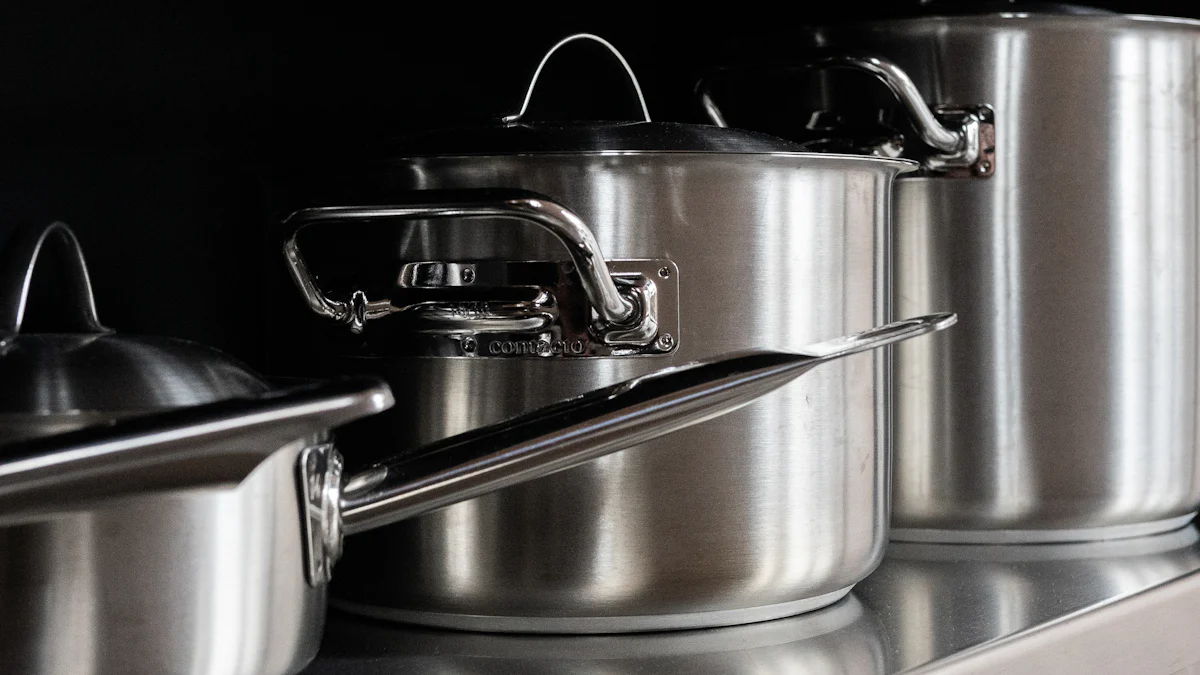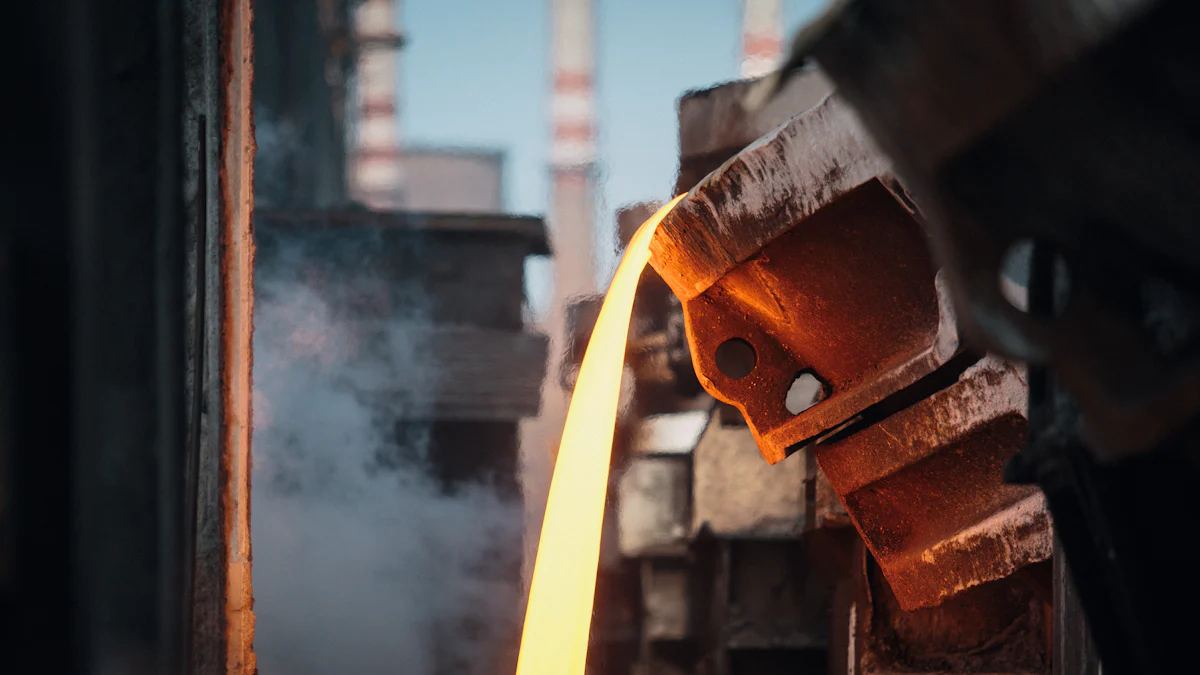Top Benefits of Stainless Steel in Investment Casting

Stainless steel Investment Casting parts offer numerous advantages across various industries. This process utilizesprecision lost wax investment casting, which involves creating industrial wax models using aluminum molds. Each wax model typically corresponds to a single casting product. After refining the wax model, multiple models are attached to a pre-prepared wax head. The models undergo a series of sand coatings, starting with a fine layer for a smooth finish. These layers dry naturally, taking about 5-8 hours for the first coat. The process continues with coarser sand layers, usually over 3-4 days. Finally, the wax is melted out, leaving a sand shell ready for molten stainless steel. This method not only ensures precision and durability but also allows for thin wall investment casting, making it ideal for complex components in metal casting applications.
Key Takeaways
- Stainless steel investment casting maximizes material utilization, significantly reducing waste and promoting recycling.
- The precision of the Casting Process minimizes machining time, leading to cost savings and efficient production.
- Superior dimensional accuracy and smooth surface finishes make stainless steel ideal for high-quality components in demanding industries.
- The ability to create complex shapes offers designers unparalleled flexibility, enabling innovative product designs.
- Stainless steel's versatility allows for customization across over 150 grades, catering to specific industry needs.
- Exceptional corrosion resistance makes stainless steel investment casting suitable for harsh environments, enhancing durability.
- Lightweight components can be produced without sacrificing strength, improving efficiency in various applications.
Enhanced Material Utilization
Stainless steel investment casting parts offer a remarkable advantage in material utilization. This process maximizes the use of materials, ensuring that every bit counts. Let's dive into how this is achieved.
Reduction in Waste
Stainless steel stands out for its recyclability. Unlike other materials, stainless steel can be recycled, which significantly reduces waste. This recycling capability not only conserves resources but also minimizes environmental impact. The process begins with creating industrial wax models using aluminum molds. Each wax model typically corresponds to a single casting product. After refining the wax model, multiple models are attached to a pre-prepared wax head. This method ensures that the material is used efficiently, leaving little to no waste behind.
Decreased Machining Time
Another benefit of stainless steel investment casting is the reduction in machining time. The precision of this casting method means that parts often require minimal finishing. The process involves coating the wax models with layers of sand, starting with a fine layer for a smooth finish. These layers dry naturally, taking about 5-8 hours for the first coat. The subsequent layers use coarser sand, usually over 3-4 days. Once the wax is melted out, the sand shell is ready for molten stainless steel. This precision casting results in parts that are closer to the final shape, reducing the need for extensive machining. This not only saves time but also cuts down on labor costs, making it a cost-effective solution for manufacturers.
Superior Dimensional Accuracy and Surface Finish

Stainless steel investment casting parts excel in delivering superior dimensional accuracy and a smooth surface finish. This precision is crucial for industries that demand high-quality components, such as aerospace, automotive, and medical sectors.
High Precision Casting
High precision casting is a hallmark of stainless steel investment casting. The process begins with the creation of industrial wax models using aluminum molds. Each wax model typically corresponds to a single casting product. After refining the wax model, multiple models are attached to a pre-prepared wax head. This method ensures that the final product closely matches the original design, reducing the need for additional machining.
The wax models undergo a series of sand coatings, starting with a fine layer for a smooth finish. These layers dry naturally, taking about 5-8 hours for the first coat. Subsequent layers use coarser sand, usually over 3-4 days. This meticulous process allows for the production of complex shapes with excellent dimensional accuracy. Manufacturers can cast several stainless steel parts into one, saving time and costs associated with welding and assembly.
Smooth Surface Finish
Achieving a smooth surface finish is another significant advantage of stainless steel investment casting. The initial fine sand layer ensures that the final product has a polished appearance. After the wax is melted out, the sand shell is ready for molten stainless steel. This precision casting results in parts that require minimal finishing, which reduces labor costs and enhances the overall aesthetic of the product.
The ability to produce intricate details and fine undercuts is a testament to the process's effectiveness. This feature is particularly beneficial for industries like food processing and petrochemical, where smooth surfaces are essential for hygiene and corrosion resistance. The final product emerges from the sand shell with a surface that often needs little to no additional treatment, making it a cost-effective solution for manufacturers.
Capability to Cast Complex Shapes

Stainless steel investment casting parts shine when it comes to creating complex shapes. This capability opens up a world of possibilities for designers and engineers. Let's explore how this process offers design flexibility and weight reduction.
Design Flexibility
Designers love the freedom that stainless steel investment casting provides. They can create intricate designs without worrying about the limitations of traditional manufacturing methods. The process starts with producing industrial wax models using aluminum molds. Each wax model typically corresponds to a single casting product. After refining the wax model, multiple models are attached to a pre-prepared wax head. This method allows for the creation of complex geometries that would be difficult or impossible to achieve with other techniques.
The wax models receive a series of sand coatings, beginning with a fine layer for a smooth finish. These layers dry naturally, taking about 5-8 hours for the first coat. Subsequent layers use coarser sand, usually over 3-4 days. This meticulous process ensures that the final product closely matches the original design. Investment Castings Professionals highlight that stainless steel's unique properties make it ideal for industries requiring materials that withstand severe environments, such as construction, medical equipment, and marine applications.
Weight Reduction
Weight reduction is another significant advantage of using stainless steel in investment casting. By allowing for the creation of thin-walled components, this process helps reduce the overall weight of the final product. The ability to cast complex shapes means that unnecessary material can be eliminated, resulting in lighter parts without compromising strength or durability.
After the wax is melted out, the sand shell is ready for molten stainless steel. The liquid metal fills the space previously occupied by the wax, capturing every detail of the design. Once the stainless steel cools and solidifies, the outer sand shell is broken away, revealing the final product. This method not only reduces weight but also enhances the efficiency of the manufacturing process.
Versatility of Stainless Steel Grades
Stainless steel investment casting parts offer remarkable versatility due to the wide range of stainless steel grades available. With over 150 grades, each possessing unique characteristics, manufacturers can tailor their choices to meet specific industry needs. This flexibility allows for the creation of parts that excel in various applications, from aerospace to medical equipment.
Customization Options
The ability to customize stainless steel grades is a significant advantage in investment casting. Each grade has distinct material properties, making it suitable for different purposes. For instance, austenitic stainless steel is known for its excellent corrosion resistance and formability, while martensitic stainless steel offers high strength and hardness. Duplex stainless steel combines the best of both worlds, providing superior strength and corrosion resistance.
Manufacturers begin by producing industrial wax models using aluminum molds. Each wax model typically corresponds to a single casting product. After refining the wax model, multiple models are attached to a pre-prepared wax head. This method ensures that the final product closely matches the original design, allowing for precise customization. The wax models receive a series of sand coatings, starting with a fine layer for a smooth finish. These layers dry naturally, taking about 5-8 hours for the first coat. Subsequent layers use coarser sand, usually over 3-4 days. This meticulous process ensures that the final product meets the desired specifications.
Corrosion Resistance
One of the standout features of stainless steel is its exceptional corrosion resistance. This property makes it ideal for applications in harsh environments, such as marine and chemical industries. The investment casting process enhances this resistance by allowing for the creation of parts with intricate details and smooth surfaces, which help prevent corrosion.
After the wax is melted out, the sand shell is ready for molten stainless steel. The liquid metal fills the space previously occupied by the wax, capturing every detail of the design. Once the stainless steel cools and solidifies, the outer sand shell is broken away, revealing the final product. This method not only ensures precision but also enhances the corrosion resistance of the parts.
Stainless steel's ability to withstand extreme conditions with minimal maintenance makes it a cost-effective choice for manufacturers. The versatility of stainless steel grades in investment casting provides endless possibilities for creating high-quality, durable components.
Stainless steel investment casting parts offer a blend of efficiency, precision, and versatility. This process begins with creating industrial wax models using aluminum molds, where each model typically corresponds to a single casting product. After refining the wax model, multiple models are attached to a pre-prepared wax head. The models undergo a series of sand coatings, starting with a fine layer for a smooth finish. This meticulous process ensures high-quality results. The ability to produce complex shapes and excellent surface finishes makes stainless steel investment casting a preferred choice across industries. Its corrosion resistance and strength-to-weight ratio further enhance its appeal, providing innovative manufacturing solutions.
FAQ
What is stainless steel investment casting?
Stainless steel investment casting is a manufacturing process that creates precise and complex metal parts. It starts with producing industrial wax models using aluminum molds. Each wax model typically corresponds to a single casting product. After refining the wax model, multiple models are attached to a pre-prepared wax head. The models undergo a series of sand coatings, starting with a fine layer for a smooth finish. This meticulous process ensures high-quality results.
Why choose stainless steel for investment casting?
Stainless steel offers exceptional benefits for investment casting. It provides excellent corrosion resistance, making it ideal for harsh environments. The material's strength and durability ensure long-lasting components. Additionally, stainless steel allows for intricate designs and complex shapes, enhancing design flexibility.
How does the investment casting process reduce waste?
Investment casting with stainless steel minimizes waste through efficient material utilization. The process involves creating wax models that correspond to the final product, ensuring minimal excess material. Stainless steel's recyclability further reduces waste, conserving resources and minimizing environmental impact.
What industries benefit from stainless steel investment casting?
Many industries benefit from stainless steel investment casting, including aerospace, automotive, medical, and marine sectors. The process's precision and ability to produce complex shapes make it suitable for applications requiring high-quality components. Stainless steel's corrosion resistance and strength-to-weight ratio enhance its appeal across various industries.
How does stainless steel investment casting achieve superior surface finish?
The investment casting process achieves a superior surface finish by applying a fine sand layer to the wax models. This initial layer ensures a polished appearance in the final product. After the wax is melted out, the sand shell is ready for molten stainless steel, resulting in parts that require minimal finishing.
Can stainless steel investment casting create lightweight components?
Yes, stainless steel investment casting can produce lightweight components. The process allows for the creation of thin-walled parts, reducing overall weight without compromising strength or durability. This capability is particularly beneficial for industries seeking to enhance efficiency and performance.
What customization options are available with stainless steel grades?
Stainless steel investment casting offers extensive customization options due to the wide range of available grades. Each grade possesses unique properties, allowing manufacturers to tailor their choices to specific industry needs. This flexibility enables the creation of parts that excel in various applications.
How does stainless steel investment casting enhance corrosion resistance?
The investment casting process enhances corrosion resistance by allowing for the creation of parts with intricate details and smooth surfaces. These features help prevent corrosion, making stainless steel ideal for applications in harsh environments, such as marine and chemical industries.
What is the role of sand coatings in the investment casting process?
Sand coatings play a crucial role in the investment casting process. They provide a smooth surface finish and ensure the final product closely matches the original design. The process involves applying multiple layers of sand, starting with a fine layer for precision and followed by coarser layers for strength and stability.
How does stainless steel investment casting contribute to cost-effectiveness?
Stainless steel investment casting contributes to cost-effectiveness by reducing machining time and labor costs. The precision of the casting process results in parts that require minimal finishing, saving time and resources. Additionally, stainless steel's durability and low maintenance requirements enhance its cost-effectiveness for manufacturers.















